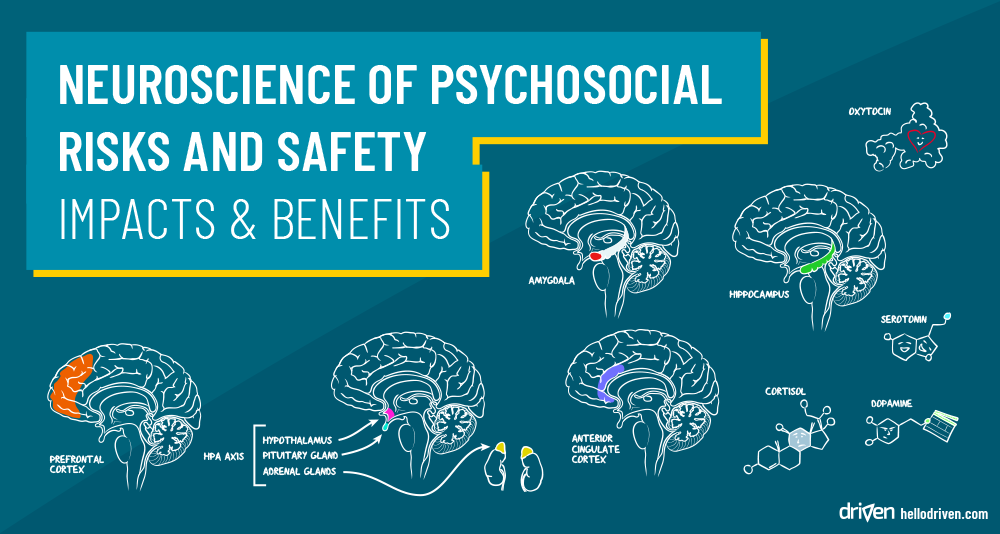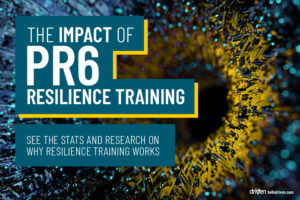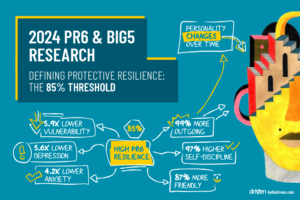How a Supportive Work Environment Boosts Creativity, Innovation, and Collaboration
Whiplash from pandemic-induced work from home, following by organisations trying to bring staff back to the office has left many scrambling to get some sense of normal. A good portion of people not wanting to return to the office have passed on a simple message – the office wasn’t a nice place to be in.
A workplace with unmanaged psychosocial hazards and risks is never going to compete with the comfort and ease of working from home. While managers can take the step of forcing staff to come back to the office, this is more likely to result in resistance and resentment if they are made to return to an environment that wasn’t great to begin with.
Developing and maintaining a healthy and inclusive work environment has become crucial for businesses to remain competitive and retain talent. Today we’ll delve into the neuroscience and explore underlying mechanisms that drive human connection, creativity, and innovation in the workplace. We will explore how a supportive and inclusive work environment can significantly impact employees’ cognitive functioning, mental health, and overall well-being, ultimately leading to higher levels of engagement and retention.
Neural impacts of an unsafe workplace environment
A major misunderstanding about resilience is that it’s about staff needing to be stronger to put up with more stress. But now many businesses are quickly learning that this is the wrong way to go about it, since if the environment itself isn’t improved, staff would rather move on to a competitor that invests in and respects their wellbeing.
"...if the environment itself isn’t improved, staff would rather move on to a competitor that invests in and respects their wellbeing."
Jurie Rossouw Tweet
This is the key – resilience requires a balance between investment from the business to create a supportive environment with psychosocial safety, which then encourages investment from individual staff to build their own resilience skills.
A lack of investment from the organisational side results in disengagement and resentment. So why is this? We can get a better idea by looking into the effect on the brain when staff face an unsupportive or unhealthy environment:

Amygdala and cortisol
- Purpose – The amygdala processes emotions, particularly fear and anxiety, while cortisol is a stress hormone released in response to perceived threats
- Impact – In an unsafe environment, the amygdala can become hyperactive and cortisol levels increase, leading to feelings of chronic stress and anxiety
- Result – An employee may constantly feel on edge, worried about potential conflicts or criticisms, and struggle to focus on their tasks
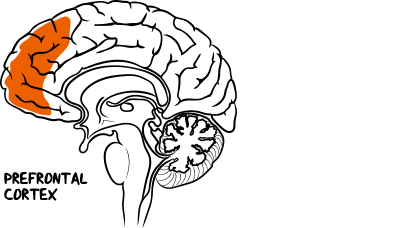
Prefrontal cortex
- Purpose – The prefrontal cortex is responsible for executive functions such as decision-making, problem-solving, and emotional regulation
- Impact – Chronic stress and anxiety can reduce the functioning of the prefrontal cortex, diminishing cognitive abilities and rational decision-making
- Result – Staff might have difficulty concentrating, making sound decisions, or controlling their emotions in response to workplace challenges
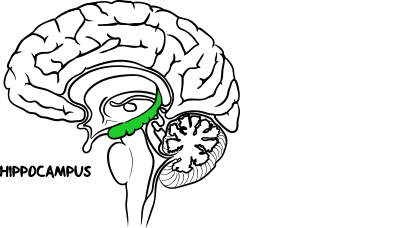
Hippocampus
- Purpose – The hippocampus plays a key role in learning and memory consolidation
- Impact – Ongoing exposure to stress can damage the hippocampus, reducing hippocampal volume, and impairing memory and learning capabilities
- Result – An employee may struggle to retain new information, leading to reduced performance and difficulties adapting to changes in the workplace
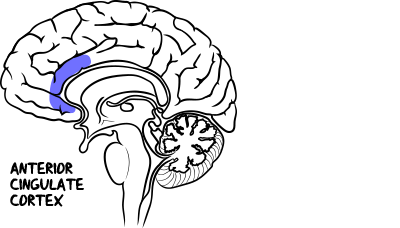
Anterior Cingulate Cortex (ACC)
- Purpose – The ACC is involved in conflict monitoring, emotional regulation, and empathy
- Impact – An unsafe environment can disrupt the ACC’s functioning, increasing conflict, reducing empathy, and impairing emotional regulation
- Result – An individual might experience heightened sensitivity to workplace disagreements, struggle to empathise with colleagues, or overreact to minor issues
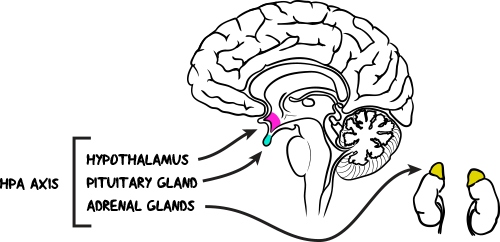
Hypothalamus-Pituitary-Adrenal (HPA) axis
- Purpose – The HPA axis regulates the stress response and helps maintain homeostasis in the body
- Impact – A psychologically unsafe workplace can cause the HPA axis to become dysregulated, leading to raised cortisol levels and negative effects on memory, learning, and immune function
- Result – A person may suffer from more frequent illnesses, have trouble recalling important details, or have difficulties acquiring new skills

Serotonin and dopamine
- Purpose – Serotonin is a neurotransmitter that helps with mood regulation, while dopamine is involved in motivation and reward
- Impact – An unsafe work environment can lead to imbalances in serotonin and dopamine levels, adding to mood disturbances, reduced motivation, and decreased job satisfaction
- Result – An employee might feel demotivated, experience mood swings, or struggle to find joy in their work

Oxytocin
- Purpose – Oxytocin is known as the “bonding hormone” and plays a crucial role in trust, empathy, and social interactions
- Impact – A hostile workplace can inhibit the release of oxytocin, leading to reduced trust, impaired empathy, and difficulties building strong relationships with colleagues
- Result – An individual may feel isolated, disconnected from their co-workers, and struggle to collaborate effectively on team projects
We can see the neural impacts of a psychologically unsafe environment can have very significant effects, which can especially expand to a larger cultural level that presents major challenges in retaining staff, as well as running a high performing organisation.
In a psychologically safe and supportive work environment, employees encounter a significantly different neural landscape that has a positive influence on their overall wellbeing, cognitive functioning, and social interactions. The neural structures and neurotransmitters that were once debilitated in an unsafe environment can now operate more efficiently, yielding numerous advantages.
The Neural Landscape of a Psychologically Safe Workplace
An emotionally secure workplace can stimulate the release of oxytocin, known as the “bonding hormone,” which boosts trust, empathy, and social connections amongst co-workers. This cultivates a sense of belonging, empowering employees to more effectively collaborate on projects, exchange ideas openly, and support each other during challenging times.
In a supportive work atmosphere, cortisol levels remain far more stable, reducing the chronic stress that can dysregulate the prefrontal cortex, hippocampus, and anterior cingulate cortex. Thus, individuals can concentrate better, make logical decisions, regulate their emotions, and empathise with others. This improves their capacity to resolve conflicts, adapt to change, and make meaningful contributions to the organisation’s objectives.
A healthy work setting promotes the regulation of serotonin and dopamine levels, which are crucial for mood and motivation. Employees in such a psychologically safe environment are more inclined to experience elevated job satisfaction, a positive perspective, and the motivation to excel in their roles.
For instance, imagine an employee working in a psychologically secure and healthy environment where they feel valued and supported by both their peers and management. This person would likely experience an increased sense of belonging and be more willing to take well-considered risks to innovate, confident that their colleagues are behind them. They would feel motivated to contribute their best efforts and engage in inventive problem-solving, as their cognitive abilities function at peak levels. Further, this employee would be more resilient when facing challenges, possessing the emotional regulation and empathetic comprehension necessary to navigate difficult situations and maintain robust relationships with their co-workers. The cumulative outcome is a thriving, engaged, and innovative workforce that advances the organisation’s success.
Here we can see that by understanding the intricate dance of neurochemistry and the neuroscience of human connection in the workplace, we can create healthier, more supportive environments where everyone can thrive. Still, there are more benefits to be achieved.
Enabling Creative Mode
The Default Mode Network (DMN) is a network of brain regions that is active when someone is resting or engaged in self-referential thinking, daydreaming, or mind-wandering. It’s been linked to self-awareness, introspection, and also key to creativity. This enables innovation in the workplace, and here too we see that the DMN’s functioning can be impacted by the quality of the workplace environment.
Unsafe workplace environment
- Increased rumination – In an unsafe work environment, the DMN might become overactive and focus on unhelpful thinking, leading to increased rumination and negative self-referential thinking. This can result in heightened anxiety, stress, and a reduced sense of self-worth
- Reduced creativity – When the DMN is excessively engaged due to stress and anxiety, it reduces brain’s ability to transition to other neural networks, like the Dorsal Attention Network (DAN), which is responsible for focused attention and problem-solving. This reduced flexibility can lead to diminished creativity and a reduced ability to generate novel ideas
- Hindered problem-solving – The overactivation of the DMN can reduce someone’s ability to concentrate on work-related tasks, leading to suboptimal performance and difficulty solving problems
Healthy, supportive workplace environment
- Enhanced creativity – In a supportive environment, the DMN can function optimally, allowing the brain to switch between the DMN and DAN efficiently. This cognitive flexibility fosters creativity, as the mind can move between introspection, idea generation, and focused attention to execute on innovation
- Mind-wandering and innovation – A healthy workplace environment provides the mental space for productive mind-wandering, which is associated with the DMN. This can lead to the generation of new ideas, insights, and innovative solutions to problems
- Reduced stress and anxiety – In a supportive work environment, the DMN is less likely to be overactive due to stress and anxiety, reducing rumination and negative self-referential thoughts. This leads to improved mental health and overall wellbeing
- Improved collaboration – A healthy workplace fosters a sense of trust and belonging among colleagues, which can influence the DMN by promoting positive self-referential thoughts and empathy. This can improve collaboration, as individuals are more likely to consider diverse perspectives and work together to generate creative solutions
Exploring the different activations of the Default Mode Network makes it even more clear why a psychologically safe workplace is critical for a well-functioning organisation that enables employee resilience and enables a culture of inclusion and safety.
How do we achieve this? There are ways we can all contribute:
- Get Resilience First Aid Certified – Learn how to spot risk and help others proactively through a strength-based approach to build resilience across the 6 domains. Great for managers, peer support staff, and anyone looking to support resilience in others
- Culture enhancement with High Adversity Resilience Training – The comprehensive culture approach of HART includes training on how to understand psychosocial risks and build a workplace that protects staff from all vectors. This program is available as a practitioner certification to access the full approach and training resources
Overall, the benefits on the neural landscape of employees is huge, leading through to a culture of safety and inclusion. On top of that, legislation is enshrining the right of employees to a safe workplace, and penalising organisations that don’t effectively manage psychosocial risks and hazards. Now is the time to be proactive.
